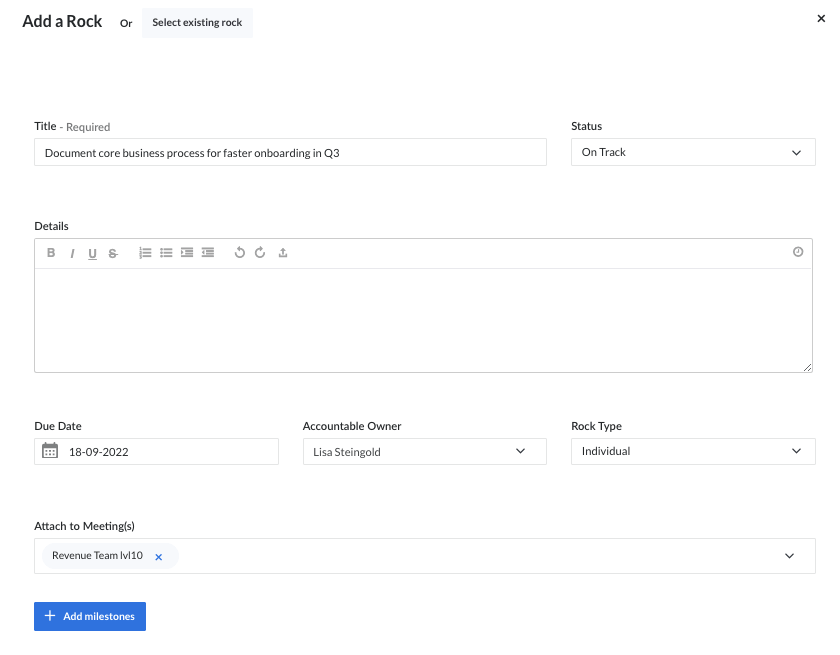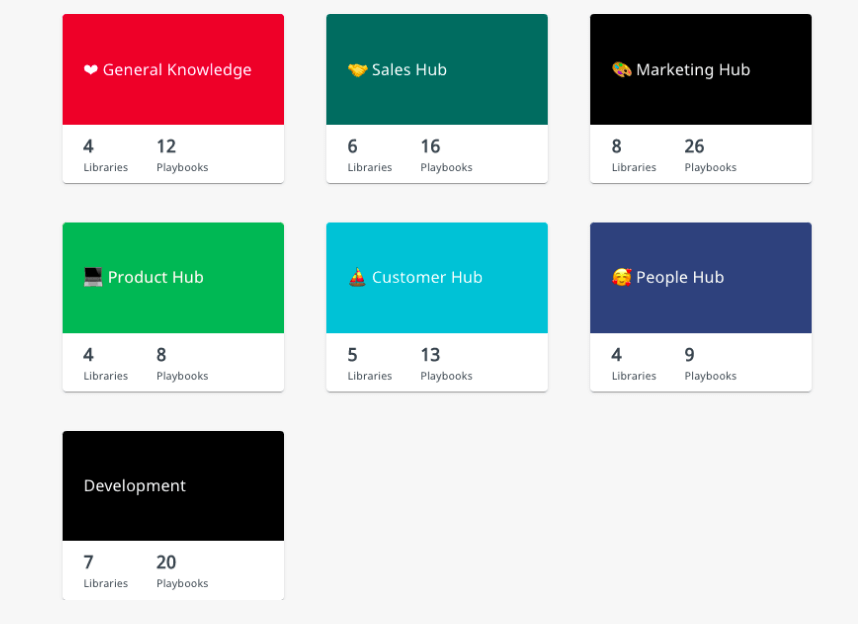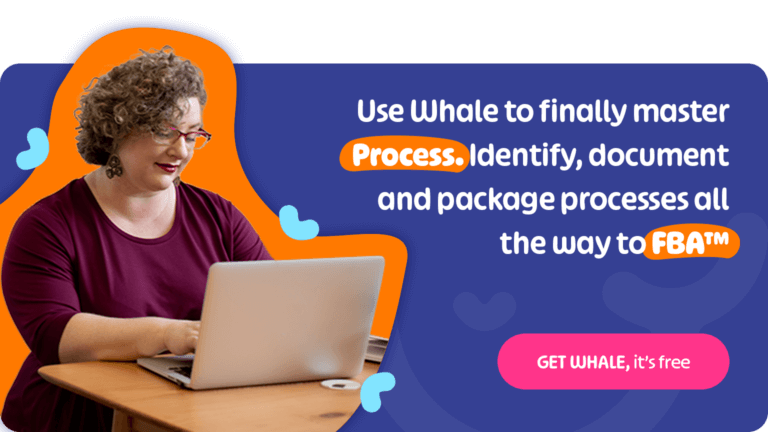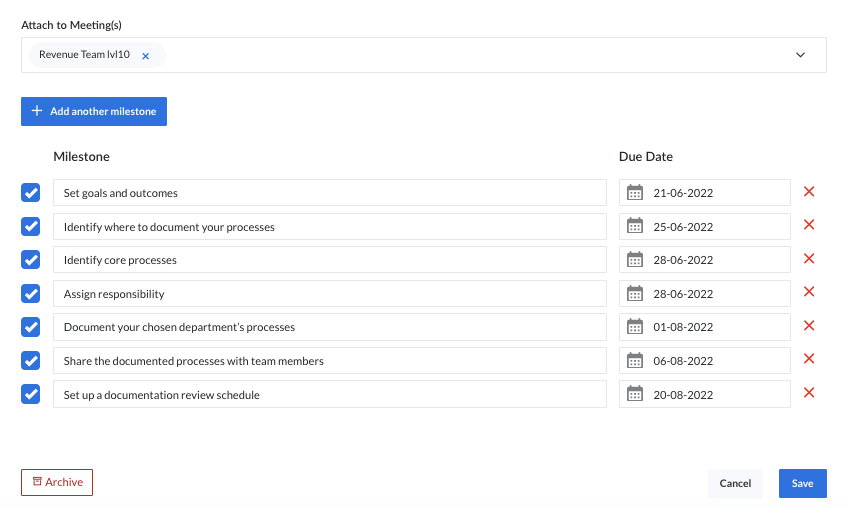What is a Rock?
If you’re unfamiliar with EOS®, you may wonder why we’re talking about rocks for processes? No, you haven’t stumbled onto a blog about geology.
We’re talking business and how to achieve your objectives through the Entrepreneurial Operating System using rocks.
A rock is a 90-day plan to help you achieve specific goals, for example, documenting your processes.
In this article, we give you the rock you need to document your processes.
Why do you need a rock to document process?
Imagine a bucket with holes that let precious water leak out over time.
Similarly, businesses can suffer from a leaky bucket effect, where vital information is lost, diluted, or misinterpreted as it passes through different layers of communication, departments, or teams. This leakage can occur at various stages, from strategy formulation to execution, and can have far-reaching implications for the organization.
In essence, it’s like having a bucket filled with holes of various sizes – some significant, some minor – through which knowledge and skills slowly trickle away. This gradual loss over time poses a growing challenge to staying competitive and pertinent as the world evolves.
Why does this matter?
Because the aim of any business is to build combined knowledge and abilities, using it as a solid base for growth. Company knowledge and information is the secret sauce of any business and one of the businesses most valuable assets.
We often speak to companies who say they’ve been wanting to document their processes for years but never seem to find the time or just find the whole ‘process’ too overwhelming.
We wanted to share a failproof (and easily attainable) way to document processes and get everyone in the company on the same page.
It’s not as seemingly difficult as you might think.
A recap - What is EOS?
The Entrepreneurial Operating System®, or EOS®, is a set of concepts and tools that comprises a complete business management system that empowers entrepreneurs to reach their business goals and improve the lives of every individual the business affects.
It’s built on 6 components: vision, people, data, issues, traction aaaaand process 
This one component lays the foundation for scalability and sustainability and ironically is one many businesses fall short on. To unlock the next level of growth in a business, everyone needs to be on the same page about how to get things done.
Bottom line?
Without processes, things get messy 
So what does a rock have to do with process? 💭
A rock, in EOS, is a way of clarifying the most important things that must be accomplished over the next 90 days in a specific area of the business.
The key to writing great Rocks is to make them S.M.A.R.T.
- Specific
- Measurable
- Attainable
- Realistic
- Timely
Rocks ensure more accountability, measurability, and traction. The business can achieve its greater objectives by creating actionable milestones in rocks.
How to document your process in a rock?
Okay, so you know the importance of having processes and procedures in your business. You know that setting a rock, and measurable objectives are important.
But where to start? 
It doesn’t have to be! The first mistake people make is thinking it’s so overwhelming when in actual fact it’s just that they haven’t done it before.
We’ve broken things down to help you get started and get it done in 7 easy steps!
We’ll walk you through using our very own example from Bloom Growth and at the end, you can download our easy-to-use cheatsheet at the end of the article.
Define your rock in a SMART way
You may find the name difficult to define in the beginning so write it down and you can always refine it. For example ‘document business processes’ may be a little too vague.
Try something more specific like ‘Document core business process for faster new hire onboarding in Q3’ which tells everyone what, why, and by when.

Of course, documenting business processes and procedures achieve an array of objectives including faster onboarding, position training, less knowledge loss when someone leaves, consistency, and customer service excellence.
We have specifically chosen faster onboarding for this example as it’s measurable and often a goal for customers using Whale to onboard and train their teams.
TIP – Want to know how to measure faster onboarding?
Check out our ROI calculator.
Set milestones


We’ve listed the following 7 action-based milestones based on documentation best practices to help you get it done!
- Set goals and outcomes
- Identify where to document processes
- Identify core processes
- Assign responsibility
- Document your chosen department’s processes
- Share the documented processes with team members
- Set up a documentation review schedule
Let’s jump right in!
1. Set goals and outcomes
What is it you actually want to achieve by documenting your processes? Choose at least one short-term goal and one long-term outcome that are aligned with what you’re wanting to achieve.
Some examples of short-term goals include:
- Define and create a process for onboarding new hires
Hint – Choose the lowest hanging fruit that is going to have the most impact on the business in order to define your short-term goals.
Examples of long-term outcomes include:
- Document 80% of our sales processes and SOPs
- Have a central place where everyone can find what and how you do what you do
- Create a seamless consistent customer experience
- Create a training process for all positions in our organization
Time to complete this activity? 
2. Identify where to document your processes
The next and often overlooked step of documenting processes is exactly where to store the information.
Well, surely they’re just stored where all documents are stored right? In the company information drive, or Google, Dropbox or Sharepoint?
The problem is that this is where the problem started in the first place!
Let’s say your new hire is trying to find something, for example, your company’s leave policy. You know you’ve got an SOP about it somewhere but you can’t remember what you renamed the procedure. And the HR guy is away on a week’s leave so you can’t ask him either.
Some people may have saved the information on their hard drives and others on the company drive except they didn’t give anyone else access and even forgot where they’d stored them. And the process can’t be utilized across the company which, as per the milestone above, is probably the long-term outcome.
Where you store your company SOPs and processes needs to achieve two things;
Everyone needs to have access. Everyone needs to be able to utilize the documents, and at the very least find them.
Using a tool such as Whale 🐳, not only helps you store your processes but will also enable utilization and access of company information.
Time to complete this activity?⏰
Choose 3 options for tools and make sure that they check the objectives of access and utilization. Then make sure they have the support you need to back it up.

3. Identify core processes
Begin this exercise by scheduling an hour or so with leadership teams in order to identify, define and agree on what their core processes are.
“These core processes (typically 6-10) are similar in every organization, no matter how big or how small, and typically include processes in HR, marketing and sales, operations, accounting and customer-retention.
No matter how many of these core processes leadership teams identify, everyone needs to be on the same page in terms of what to call them and what they consist of. Doing this creates clarity, reduces confusion, and gets everyone speaking the same language.” (EOS)

EOS recommends following the 20/80 rule when documenting your core processes; documenting 20% produces 80% of the results. We agree and we hear this feedback from past clients time and time again;
“Don’t try and do it all at once”.
Start with the most important information first!
Time to complete this activity?
1 hour. This activity can be accomplished with the following activity of assigning responsibility to kill two (time) birds with one stone.
4. Assign responsibility
The reason most entrepreneurs feel so overwhelmed when documenting their processes is that they think they have to do it all themselves. Not so.
There’s a world of support out there 
And if not, there are external specialists to help!
Ask yourself and your teams;
- Who is responsible for each unit of the company (pillar) in terms of documentation?
- Who is responsible for executing the relevant processes – involve them in the feedback process. With the comments feature in Whale, you can do just that.
- Who will be responsible for the actual creation of the content (the boards and cards)?
Need help in knowing how to choose to help you migrate or create content?
At Whale 
Time to complete this activity? 
10 minutes to decide who needs to own the SOP and who needs to document it.
5. Document your chosen department's process
This ties back to what questions are being asked most often.
Start there.
This will help you and your team know exactly what content needs to be included in your relevant company information.
When documenting your company information;






Check out our Guidelines on how to write effective SOPs and How to write standard operating procedures that actually boost ROI for more insight on how to achieve this milestone.
This part of the process may seem the most arduous, which is why we suggest using templates and/or working with external support to help complete the task.
Did you know?
Whale 
And has Whale’s migration service helps you import existing content into our all-in-one knowledge tool for easy access and organized processes.
Time to complete this activity?
The time taken to complete this activity is dependent on your team’s drive and focus to get it down and dependant on whether you decide to work with additional support from Whale or Whale’s partners.
We’ve known teams get this done in just 4 weeks! Think you can beat that? Let us know as we’d love to hear from you and share your story!
6. Share the documented processes with team members
This step is ironically where most businesses fail.
Most businesses havee information. It may be stored in various repositories such as on devices, Google Drive, or even in someone’s mind, making it inaccessible to other team members.
Don’t be a statistic!
Scaling is all about using technology to make life and process easy. You can use Google Drive, but how will you ensure that team members have access to the information when needed?
Whale’s 
Whatever tool you use, make sure to choose a platform that enables knowledge sharing as opposed to pure knowledge management.
Time to complete this activity? 
0 minutes! Yes, that’s right ZEO!
With Whale’s Chrome extension and content tags, it takes no time at all to share information with team members. Automated prompts in Whale will share the relevant documentation when working on related documents.
Additionally, with Whale’s automated assignment feature, company knowledge flows to the right person at the right time.
7. Set up a documentation review schedule
Wow! You did it!
Your documentation is done and you’ve ticked off your final milestone!
Now you just leave it and let it work it’s magic
Now you need to set a review schedule to ensure that documentation remains up to date. You can set this up as an assignment in Whale
Time to complete this activity? 
5 minutes! Simply logging an assignment in Whale or just putting quarterly or bi-annual checkups on your calendar will take just 5 minutes and save you a mountain of time going forward.
Report back on success and lessons learned
If you’ve come this far, take a moment to pause and reflect on the successes and lessons learned. To have completed the rock you need to document your processes is a monumentous achievement. It’s also one that you’re likely to repeat.
Most businesses don’t start documenting their processes because it seems too overwhelming and will take too much time but hopefully, you’ve seen that creating a rock with achievable milestones is much easier than you imagined.
What’s more, it’s probably MUCH less time-consuming than having no processes in place at all.
The above milestones can move from mountains to done in just two weeks and a couple hours of work time. Imagine how much time this might save you when onboarding new team members?
You could even use our ROI calculator to work it out!
Even if you didn’t get your rock done entirely don’t despair!

Whale has additional services and an array of partners to help you complete your process rock!
- Our migration service helps you import existing content into our all-in-one knowledge tool for easy access and organized processes.
- With our documentation service, our experts help to get processes and Standard Operating Procedures out of your head and into Whale.
- Our coaching and training services offers virtual 1-1 video calls with a dedicated Customer Service Manager to make your onboarding and adoption as smooth as possible.
Or work with a Whale certified partner to guide you through the “process”










